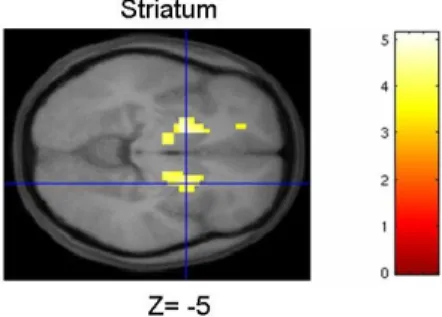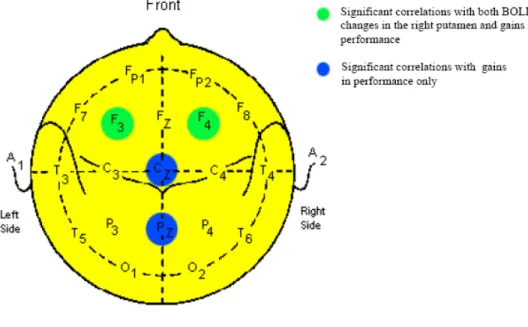Sleep spindles and neural activity changes in the Putamen underlie motor sequence consolidation.
Marc Barakat (1,2,3), Julie Carrier (1,2,3), Karen Debas (1,3); Ovidiu Lungu (1); Gilles Vandewalle (1,2); Pierre Bellec (4); Habib Benali (6)and Julien Doyon (1,3,5,6)
1Functional Neuroimaging Unit, Centre de recherche de l’institut gériatrique de
l’université de Montréal, 4565 Queen Mary, Montreal H3W 1W5, Québec, Canada
2Centre d’étude du sommeil et des rythmes biologiques, Hôpital du Sacré-Cœur de
Montréal, Montreal, Québec, Canada
3Centre de recherche en neuropsychologie et en cognition, Department of Psychology,
University of Montreal, Montreal, Québec, Canada
4McConnell Brain Imaging Centre, Montreal Neurological Institute, McGill University,
Montreal, Canada H3A2B4
5Laboratory of Brain and Cognition, NIMH, NIH, Bethesda, MD, USA
6Unité Mixte de Recherche-S 678, Institut National de la Santé et de la Recherche
Médicale/University of Paris 6, Centre Hospitalier Universitaire Pitié-Salpêtrière, Paris, France
Keywords: Motor sequence consolidation, Striatum, Sleep spindles Introduction
Some evidence suggest that motor sequence consolidation might be associated, at the very least, with changes of activity within the putamen {Doyon, 2002 #336}{Doyon, 2005 #313}{Fischer, 2005 #549}{Walker, 2005 #2647}. Moreover, our group and others have previously shown that spindles during Non-Rapid Eye Movement sleep are increased in the post-training night, hence suggesting that they may be involved in the consolidation process of this type of motor skill {Morin, 2008 #1354}. Yet, the relation between sleep and imaging data has never been addressed.
The purpose of this study was thus to investigate the association between sleep parameters, behavioral data and changes in neural substrates following consolidation of motor sequence learning. We hypothesized that sleep spindles would correlate with changes in BOLD responses after the experimental night, and with the level of spontaneous improvement in performance (consolidation) on the motor sequence task. Methods
We used the data of a previous study (Debas et al., submitted) (see fig.1), in which BOLD responses at 3.0T were acquired in twenty-four young healthy subjects who were assigned to either a Night/sleep or a Day/awake group. All subjects were trained on an explicitly known 5-item sequence (i.e. 4-1-3-2-4), which they were asked to produce 20 consecutive times with their left hand as quickly as possible using a MR-compatible response box. After training, subjects were scanned while performing the sequence or during a rest condition. Subjects of the Day/awake group were scanned at 9:00 am and then retested and scanned after a 12 hours awake period, whereas those of the Night/Sleep group were scanned at 9:00 pm and were retested and scanned 12 hours later after a night of sleep during which polysomnographic measures were recorded (see fig.2).
Dependent measures
Motor memory consolidation was first operationally defined as percentage change in performance between the last bloc of training and the first bloc at retest. An automatic algorithm was also used to detect amplitude, number and duration of fast (13.1-14.9 Hz) and slow (11.1-12.9 Hz) spindles on frontal (F3, Fz, F4), central (C3, Cz, C4) and parietal (P3, Pz, P4) derivations during the NREM sleep, based on an adapted version of the criteria used by Molle et al {Molle, 2002 #1340}. Finally, based on the results of our previous fMRI study (Debas et al, submitted), parameter estimates (beta values) for significant voxels in both the right and the left putamen (two of the regions involved in consolidation) were extracted for every subject of the Night/sleep group, and difference between both scanning sessions was computed. Pearson product-moment correlations were carried out between sleep spindles characteristics, changes in BOLD activity in the putamen and the overnight gains in subjects’ performance.
Results
As predicted, significant gains in performance were observed in the Night/sleep group only, thus confirming that sleep-dependent motor memory consolidation occurred in that group (see fig. 3). More importantly, however, changes in parameter estimates in the right putamen correlated significantly with the amplitude of slow spindles at F3, F4, Cz and Pz derivations, as well as with that of fast spindles at Cz and Pz. Yet, there was no significant correlation with the left putamen. Further correlation analyses carried out between spindles amplitude on those previous derivations and the amount of gains in performance after sleep, revealed that the amplitude of slow spindles at F3 and F4, as well as that of fast spindles at Cz, correlate positively with performance gains (consolidation) (see fig.4a-b).
Conclusion
Our results support the view that sleep spindles can be a good predictor of motor sequence consolidation. For the first time, we demonstrate that the amplitude of both fast and slow sleep spindles correlates with previously demonstrated changes of activity in the putamen after motor consolidation, and with behavioural gains of performance in motor sequence learning. Furthermore, this two-way correlation sheds additional light on the critical role that the striatum plays in the consolidation of motor sequence learning, as predicted by Doyon and Ungerleider’s model {{Doyon, 2005 #313}; {Doyon, 2002 #336}of motor skill learning.
Fig.1: Functional data showing brain areas involved in the consolidation process of motor sequence learning.
Fig. 2: Experimental design used for the Day/awake and Night/sleep groups in Debas et al. (submitted)
Fig. 4a: Slow spindles EEG-fMRI and EEG-behavior correlations

